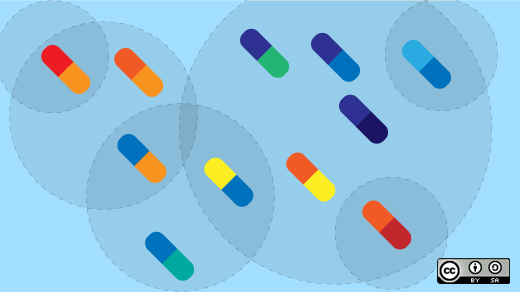Imagine you could take your prescription pill with a microchip attached. And when ingested, the chip sends wireless signals through your body and transmits not only ingestion information but also your real-time heart rate, respiratory rate, temperature, even body angle and sleep status. You can send this information wherever you'd like it to go: your own computer, your doctor's office, your childrens' cell phones. Sounds like a piece of science fiction, right?
Wrong. You don't have to imagine this marvelous little drug. Proteus Biomedical created the smart pill over a year ago.
Andrew Thompson, president and CEO of Proteus Biomedical, a Redwood City, California-based company, explains that this platform “can be used as a way to expand the definition of what a pharmaceutical product actually is. What we’re doing is medicine combined with information, education, and motivation, making use of the mobile Internet.”
This is only one example of how the pharmaceutical industry landscape is rapidly changing. A recent report from Ernst & Young suggests that big pharma must shift from a product-centric business model to a customer-centric one to remain relevant. The report highlights how recent trends such as health reform, health IT, and rising consumer power are driving nontraditional companies into the pharma sector.
In order for pharma to deliver cost-effective healthy outcomes, the report suggests that the industry must begin to collaborate with companies and start-ups not traditionally involved in healthcare, such as information-technology, telecoms, and mobility companies.
If pharma of the far past was centered on the blockbuster drug, and pharma 2.0 was focused on market access then this new Pharma 3.0 is the era of healthy outcomes, the time when actual results--like the increased quality of life for a patient--becomes the key indicator of a drug or therapy success. We expect this to be a time where the industry really focuses on engaging with patients.
In this innovation-driven industry always looking for new areas of growth, information technology may not immediately come to mind. Jonathan Richman, author of the blog, Dose of Digital, is a self-described, “former pharma guy now preaching digital to every pharma and healthcare company that'll listen.” Richman explained at South-by-Southwest (SXSW) that, “In the future, it will be digital technologies that prevent, treat, and finally cure diseases...not the latest 'blockbuster' drug that has yet to be discovered (and might never be).”
ABI Research corroborates Richman's assertion in a recent report that expects mobile data services for healthcare will grow to $7.7 billion by 2014.
So how far along on this new path is big pharma? Maybe not so far yet. According to a survey by Cegedim, the majority of top pharmaceuticals are currently spending less than 5 percent of their marketing budgets developing social media initiatives.
Even with these low numbers, everyone still seems to agree that there’s great potential in digital concepts that directly help patients cope with their conditions. We all want healthy—or at least healthier--outcomes. So maybe, as Richman suggests, my computer is the next wonder drug.






6 Comments